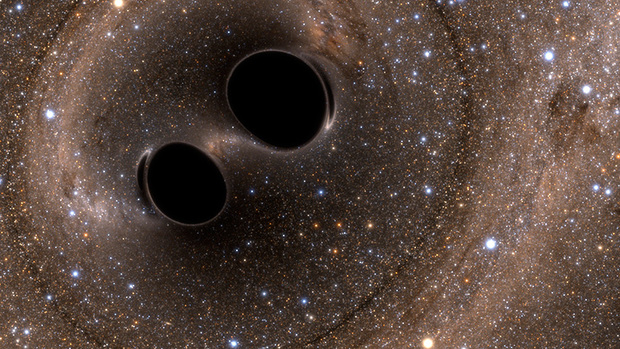Black hole mergers represent some of the most violent and captivating phenomena in the universe. Their formation often starts with two black holes in distant orbits, either originating from a binary star system or arising from random encounters in interstellar space. As they begin to spiral inward towards each other, they need to shed significant orbital energy to get close enough for a merger. This energy dissipation primarily occurs through the gravitational interactions with surrounding matter, such as gas, dust, and even larger celestial bodies. While some of these objects may be drawn into the black holes, others provide a slingshot effect that aids in their movement, helping the black holes lose energy and progressively draw near.
As the black holes approach each other, they begin to produce a diverse array of gravitational waves, akin to ripples spreading out from a stone thrown into water. However, these gravitational waves are weak when they are still at a distance and only become significant when the black holes are on the brink of collision. The challenge of understanding this process has given rise to a concept known as the “final parsec problem.” This issue arises because conventional simulations can show how gravitational interactions allow black holes to come within one parsec of one another relatively quickly. Still, once they are that close, the environment lacks sufficient material to facilitate further energy loss. Conversely, the process of gravitational wave energy dissipation in this range is dramatically slower than necessary for a merge to occur within the lifespan of celestial bodies.
Despite the unsolved nature of the final parsec problem, black holes ultimately find a way to draw close enough for gravitational waves to substantially impact their energy level. Once they’re nearly in contact, the intense gravitational interaction begins to warp the very fabric of space-time around them. As they proceed in their dance, the event horizons—the boundaries beyond which nothing can escape—start to reshape and distort as they pull closer. Advanced computer simulations help visualize this transformation, revealing that milliseconds before the merge, each black hole sends out a slender tendril of its event horizon towards the other, as though they are trying to connect.
Shortly thereafter, these tendrils create a bridge between the two black holes, enabling them to coalesce into one. This merging process resembles two soap bubbles combining into a single entity. While the fundamental aspects of black hole behavior during this period can be visualized through simulations, what precisely happens within the resultant merged black hole remains largely a mystery. The core of a black hole is identified as a singularity, where gravitational forces become infinitely dense and our understanding of physics fails, making predictions of events inside exceedingly uncertain.
Upon merging, the newly formed black hole is actually observed to have a total mass that totals less than that of the two original black holes combined. A notable instance in 2016 showed that a merger between a 36-solar-mass black hole and a 30-solar-mass black hole resulted in a single black hole of only 63 solar masses, revealing a loss of three solar masses. This mass loss is attributed to conversion into energy, specifically in the form of gravitational waves, with around 5% of the total mass being transformed in every merger. This remarkable transformation of mass into energy through gravitational waves signifies an enormously powerful release of energy, often greater than that emitted by all the stars throughout the universe combined.
Thus, black hole mergers encapsulate the quintessential interplay of cosmic forces where extraordinary events occur in silence and darkness, highlighting the vast and often complex nature of the universe. Through the study of these phenomena, astronomers can glean insights about the very fabric of space-time, the dynamics of massive celestial bodies, and the continuing quest to understand the mechanisms governing such dramatic cosmic interactions. As the universe unfolds its mysteries, the gravitational waves generated by these colossal mergers will continue to serve as a vital tool for probing the very essence of our existence.

